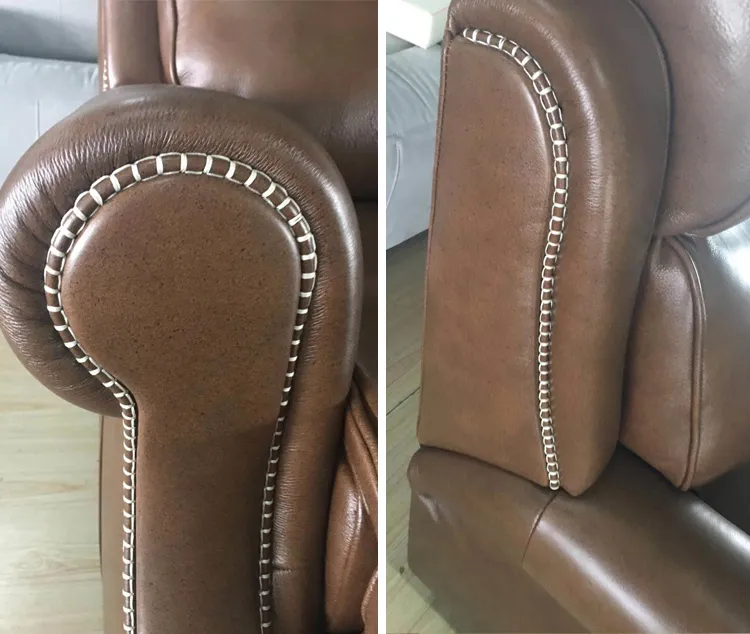saddle sewing machine
The Evolution and Importance of Saddle Sewing Machines
Saddle sewing machines have become an indispensable tool in the leatherworking and saddlery industries, playing a crucial role in the creation of high-quality leather goods, particularly saddles and other equestrian equipment. These specialized machines are designed to handle the thick, durable materials required for crafting saddles, and their unique features distinguish them from standard sewing machines.
The Historical Context
The origins of saddle sewing machines can be traced back to the 19th century when the demand for professional-quality saddles surged alongside the rise of horseback riding as a popular form of transportation and sport. Traditional hand-stitching methods were labor-intensive and time-consuming, prompting artisans to seek more efficient alternatives. The introduction of sewing machines marked a turning point that revolutionized saddle making.
Early saddle sewing machines were often heavy-duty models adapted from standard sewing machines. They required considerable manual effort and were limited in functionality. Over the years, manufacturers began to design machines specifically for saddle making, incorporating features that improved their efficiency and ease of use.
Key Features of Saddle Sewing Machines
Saddle sewing machines are characterized by several unique features designed to accommodate the thickness and rigidity of leather. One of the most significant attributes is the walking foot mechanism, which helps manage multiple layers of leather without slipping. This feature allows for consistent stitching, essential for creating durable saddles that can withstand the wear and tear of daily use.
Another important feature is the heavy-duty motor, providing the necessary power to sew through thick materials with relative ease. Saddle sewing machines are often equipped with a high presser foot lift, allowing for the handling of thicker materials, which is critical in the construction of saddles that involve multiple layers of leather and padding.
Additionally, many saddle sewing machines offer various stitch length adjustments, allowing artisans to choose the most suitable stitch for their projects. A longer stitch is typically used for utility sewn items, while shorter stitches might be employed for decorative elements, enhancing the overall aesthetic of the finished product.
saddle sewing machine

The Craftsmanship Behind Saddle Making
While saddle sewing machines enhance the efficiency and quality of saddle production, the artistry of saddle making remains a skilled craft. Artisans must have a profound understanding of leather, including its properties, strengths, and potential weaknesses. The manual labor involved in preparing the leather—cutting, dyeing, and conditioning—requires years of experience and knowledge.
Moreover, the design of a saddle goes beyond mere functionality; it involves a deep appreciation of aesthetics and ergonomics. The combination of machine stitching and hand-finishing techniques elevates the craftsmanship, creating saddles that are not just tools but also pieces of art.
The Modern Saddle Sewing Machine
In recent years, advancements in technology have led to the development of computerized saddle sewing machines. These machines offer even greater accuracy and flexibility, allowing artisans to create intricate designs with minimal manual effort. Features such as programmable stitching patterns and automatic tension adjustments have made saddle making more efficient, while still preserving the artisan's touch.
Despite the rise of modern machinery, the essence of saddle making remains rooted in tradition. Many artisans continue to prefer vintage or manually operated saddle sewing machines, valuing the tactile experience and control that comes with them. The blend of old and new technologies allows leatherworkers to innovate while respecting the rich heritage of saddle making.
Conclusion
Saddle sewing machines play a vital role in the evolution of the leatherworking industry, combining functionality with artistry. As technology advances, these machines continue to evolve, yet the core of saddle making—the skill and creativity of the artisan—remains unchanged. Whether it's a simple riding saddle or an elaborately designed work of art, the saddle sewing machine is at the heart of every creation, facilitating craftsmanship that endures through time.
-
Leather Sewing Machine: The Industrial Standard for Tough MaterialsNewsJul.18,2025
-
Sail Making Machine: Heavy-Duty Stitching for Industrial and Marine NeedsNewsJul.18,2025
-
Sling Sewing Machine: The Backbone of Heavy-Duty FabricationNewsJul.18,2025
-
Leather Sewing Machine: Precision for Heavy-Duty StitchingNewsJul.18,2025
-
Big Bag Sewing Machine: Powering the Future of Bulk PackagingNewsJul.18,2025
-
FIBC Sewing Machine: Essential Equipment for Bulk Bag ProductionNewsJul.18,2025
-
Heavy Duty Leather Sewing Machine: A Must-Have for Professional LeatherworkNewsMay.28,2025





























